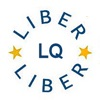The Integration of Internet Resources into a Library’s Special Subject Services – the Example of the History Guide of the State and University Library of Goettingen
DOI:
https://doi.org/10.18352/lq.7606Abstract
The Internet has created a unique type of media for scholarly information and publication, the subject-specific web site. Sometimes subject-specific web sites reveal still striking similarities to examples derived from the world of print, like electronic journals or text archives, but it is becoming more and more obvious that this is largely due to their authors’ adherence to traditional ways of thinking rather than to a lack of knowledge about the new type of media. It is beginning to get through that we have to cope with a new type of media requiring new organisational and technical models. It is crucial to understand how insufficient it would be to try to handle these new media types in the same way as their printed predecessors. Largely there are two reasons why subject-specific web sites require new approaches to dealing with them: unlike printed books web sites do not have a fixed status and even after making them available to the public they are often changed, revised, and enlarged. Once published they do not have a fixed status but are changing regularly. They are to a large degree dynamic compared to printed resources librarians are familiar with. And secondly they are representing networked information, which does not have to have a fixed place like a library building any more because it can be accessed from all over the world via the Internet.Downloads
Download data is not yet available.

Published
2000-06-22
Issue
Section
Articles
License
Copyright (c) 2000 Wilfried Enderle

This work is licensed under a Creative Commons Attribution 4.0 International License.
How to Cite
Enderle, W. (2000). The Integration of Internet Resources into a Library’s Special Subject Services – the Example of the History Guide of the State and University Library of Goettingen. LIBER Quarterly: The Journal of the Association of European Research Libraries, 10(3), 342-366. https://doi.org/10.18352/lq.7606





